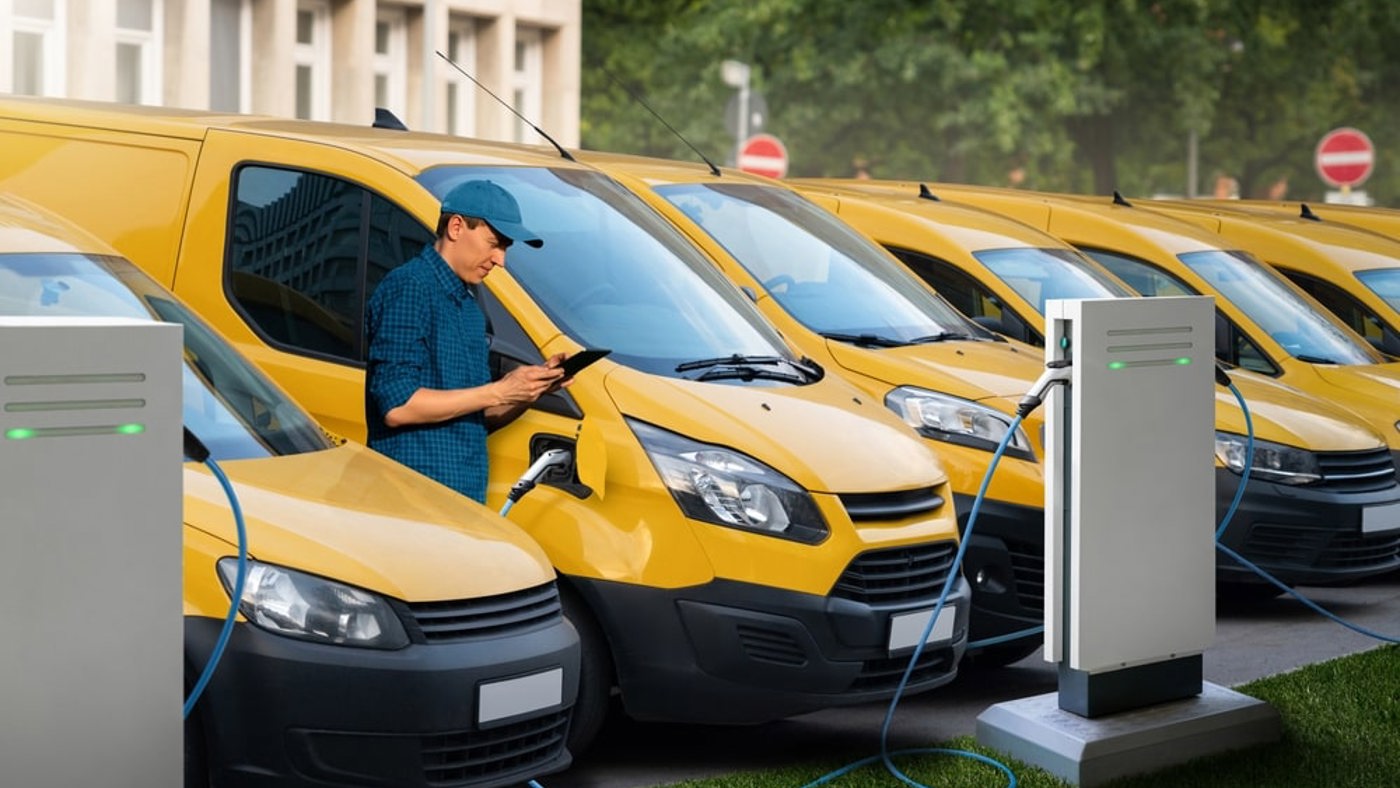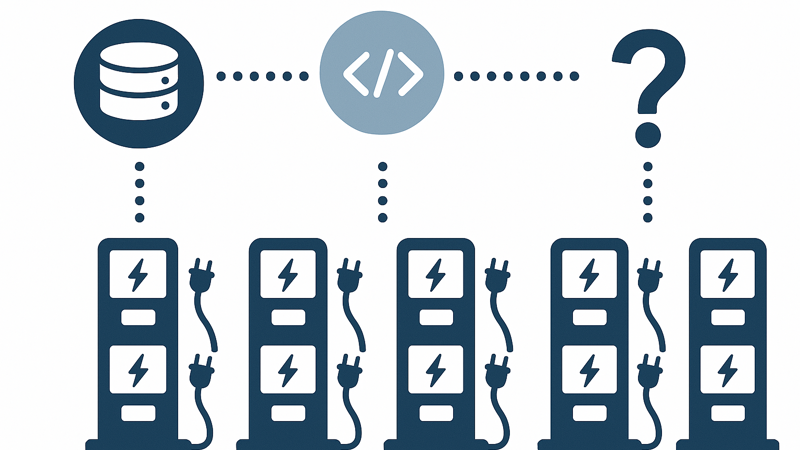
Software First: The Best Approach for EV Fleets
When businesses and organisations look to make the necessary switch from standard ICE vehicle fleets to EVs, the most common practice is to start with the chargers themselves.
Transitioning your fleet to EV can be daunting, and with software presenting ‘one extra thing’ to think about on the switchover, it can be easy to push it to the bottom of the priority list.
But in fact, EV charging software can be the difference between a smooth and stressful transition.
In this article, we’ll explain how taking a software-first approach to EV fleet transition can be your biggest determining factor in operational success.
Software success stories
The first place to look at when trying to prove EV charging software’s credibility is success stories. And luckily for us, they’re not hard to find.
You only need to look at the biggest trailblazers in fleet transition to see how crucial EV charging software is to success.
Take Nottingham City Council, for example. An early adopter of the EV fleet, the council started their transition in 2016 and has kept going full steam ahead, transitioning around 50% of its fleet to electric at the time of writing.
According to the council’s Innovation & Change Manager Matt Ralfe, “It was vital to have a clear view of the multiple charging sites used by staff delivering services to the city, and data to inform decisions to minimise disruption.”
And you can’t argue with him, with the data the council received from the Clenergy EV management hub providing insight into driver charging habits that, when subsequently addressed, helped contribute to over £1 million a year in running costs savings.
Elsewhere, Transportation giant Scania UK has used the Clenergy EV systems to plan the rollout of their EV charging infrastructure across the country, with growth from just five satellite charging sites to 45 in total by 2030 in the works. They said, “Without EV charging software, transition simply wouldn’t have been feasible.” We can’t get a more glowing endorsement than that!
The essentials of managing an EV charger network
When overseeing a charging network, there are a few things you have to keep in mind. Firstly, you need to ensure that charge points are online, and running as intended. This seems obvious but can be more complicated than it sounds. Aside from sticking to stringent regulations mandating 99% uptime, you’ll also need to make sure that chargers are working at their maximum capacity whenever possible.
That’s where software features like dynamic load balancing can come in. With these features, you can automatically distribute your available electrical load across each of the chargers in use at your site; once one driver stops charging (say at a six-charger site), the amount allocated to the remaining chargers increases and charging gets quicker.
That’s important for operators running a network for public use, but what about fleet managers?
Fleet managers are also given a single centralised command centre to oversee their fleet charging, gaining access to vehicle battery percentage, which chargers your fleet is using, and where. From here, you can access tools like hiding certain chargers that may be more expensive from your drivers and changing their fuelling habits to be as cost-efficient as possible. And that doesn’t necessarily mean a hit to availability either, as our app’s EV Roaming feature gives access to over 250,000 chargers in the UK and Europe, and new deals lined up to keep this number growing.
Public EV charging regulations
We’ve already touched on them briefly, but the biggest consideration encountered by those looking to manage charging networks for public use is the latest charge point regulations. See a full breakdown of the regulations, some of which came into play in 2024, in the blog linked above, but here’s a quick recap of what operators need to adhere to:
- 99% charger reliability rates
- Guest checkouts without sign-up or T’s & C’s
- Contactless payments
- 24/7 driver helplines
Among others. In short, software is your must-have companion to making these regulations manageable. Need to keep track fo charger uptime, and streamline maintenance to reach 99% reliability? Check. Need to offer contactless payments to your customers? Our systems can process these. Need to provide a 24/7 helpline for customers? We’ve got you covered.
Software data insights: location, location, location
We’ve already touched on some of the value of having comprehensive data on your chargers and usage available on one easy platform. But the full potential of this data goes beyond that.
When it comes to building a charging network; whether you’re looking to service the general public or an internal fleet, the placement of your EV chargers is key to getting the most out of them.
Across the board, positioning your initial EV chargers can be fairly simple. If you’re providing public charging, you’re going to want to go for the most obvious high-footfall areas. That means busy car parks; stadiums; shopping centres; and leisure centres.
But beyond that, you can use the data collected from previously installed charge points to direct you to areas and locations that get the most usage.
That means you ensure maximum utilisation of your investment. One local council using our software was able to target the next points for installation in their public EV charging rollout, which meant they were able to make the most of their investments and target the areas in which the demand for EV charging may not have been obvious.
Hardware first: the common pitfalls
When approaching your EV charging procurement, the default approach common with any tech, is to think of the hardware/charger brands first. In most industries, there’d be no issue with that. However, in EV, it can make all the difference.
As a software company, we often deal with clients who are unhappy with their management options for their network, and who come to us as a potential solution. From these clients, we often hear about the struggles caused by proprietary software.
What do we mean by this?
Proprietary software comes pre-packaged onto chargers, often developed by the hardware/charger manufacturer. With this software as a default, it lacks the key features of a regular software package - including OCPP compatibility.
That means you could be left with a management software package that only works with a specific brand of chargers. So if you don’t like your software, and see packages with better features on the market, you won’t be able to switch without ripping your chargers out of the ground and starting again. An expense nobody wants!
It may seem like a specific scenario, but it is one managers are liable to wander into without being aware of. No one wants to be left managing a network with outdated tools, watching others in the industry make the most of upcoming developments like V2G charging capabilities to earn back ROI, and other potential hardware upgrades that may emerge.
Of course, this isn’t meant to be a scare story! It’s simply stressing the importance of making an informed decision before you buy, so make sure you double-check with either a software company that IS OCPP-compliant, or your hardware brand to make sure the chargers you’re choosing are compatible with a range of providers. So if you need to switch in the future (just as you may with any service provider), you can!
Best EV charging software companies: the difference makers
Those are just a few of the reasons why you may want to consider your software options before you start installing chargers for your EV transition.
Thanks for reading, and if you have any questions about our service or how software can help you get the most out of your charging network, get in touch through the contact form below.


